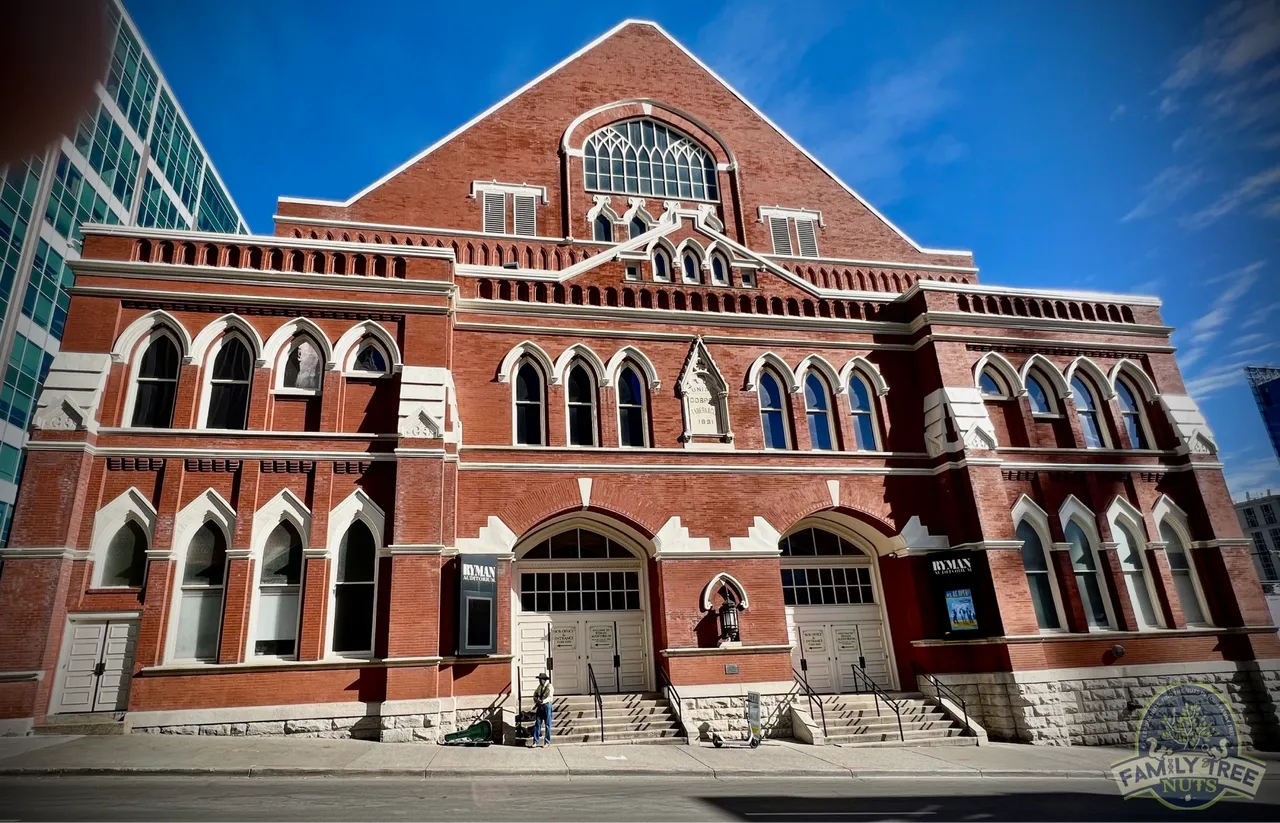
HISTORIC GRAND OLE OPRY HOME, RYMAN AUDITORIUM STORY
His rowdy friends set out to have a lot of fun on the town, down in Nashville, but instead, he ran into an event that changed his life and the face of Nashville forever. Captain Tom Ryman was one of Nashville’s wealthiest citizens, and he built a shipping empire down on the Cumberland River, called the Ryman Line, which consisted of about thirty-five paddlewheel steamboats, that were used to move freight in, and out of Central Tennessee. The steamboats weren’t all that he owned, let’s just say that there were a few unsavory establishments down on the river, and he owned a few of them.
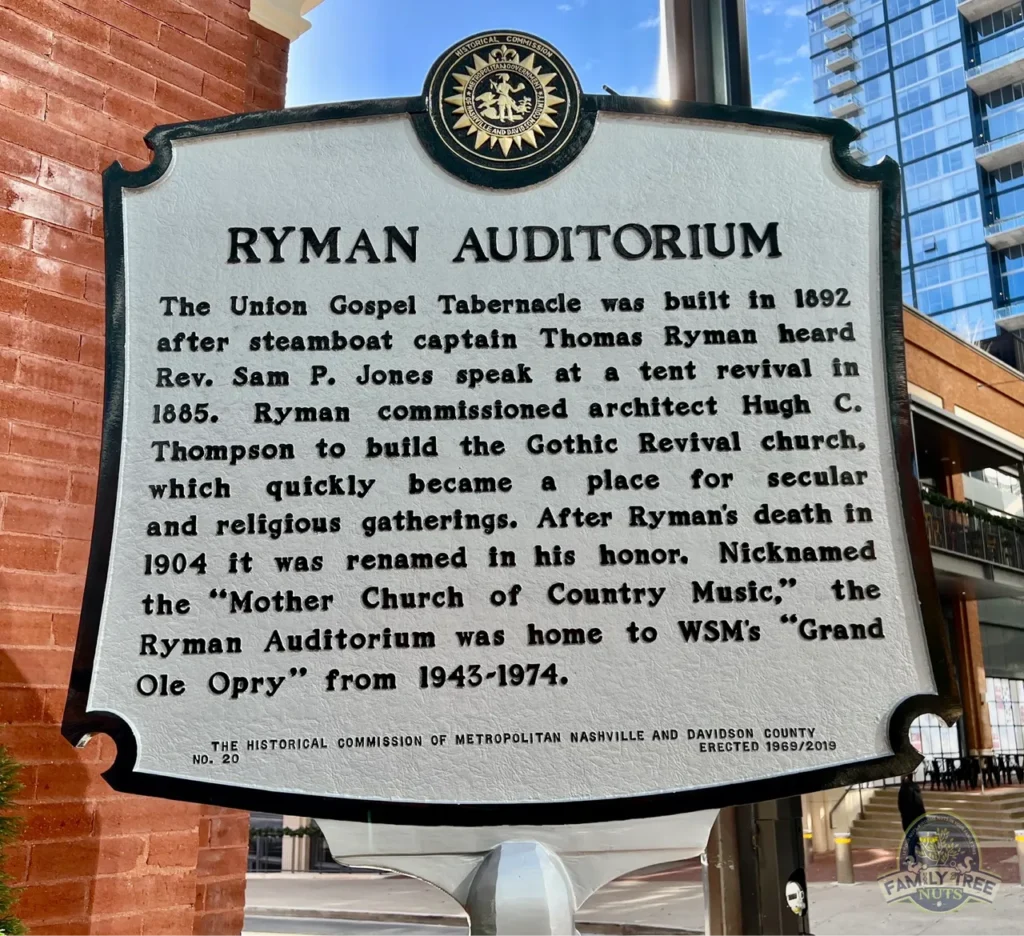
He catered to that rowdy crowd, the dockworkers downtown, and it was all about whiskey. He shipped a lot of it into Nashville, making it not a place where the good Christian citizens of Nashville would want to be seen. Captain Ryman built his house on Second Avenue in downtown Nashville, and he and his family lived a very lavish lifestyle in the growing river town. His house was located on a small hill where all the wealthy people in town lived.
On the evening of May 10, 1885, Tom and his friends left his house and headed downtown for a little drinking and mischief. It wasn’t long before they reached 8th and Broad Streets, where they came upon a tent, with a lot of people, upwards of 6,000, where it was the good Reverend Sam Jones, a traveling preacher, who was preaching fire, and brimstone to thousands every night. Captain Tom and his friends saw this is a good opportunity to do a little bit of heckling and have a little bit of fun. As they entered the tent, instead of acting foolish, Tom actually started listening to what the preacher was saying. They say soon that night, Captain Tom Ryman saw the light, was converted, and forever changed his ways.
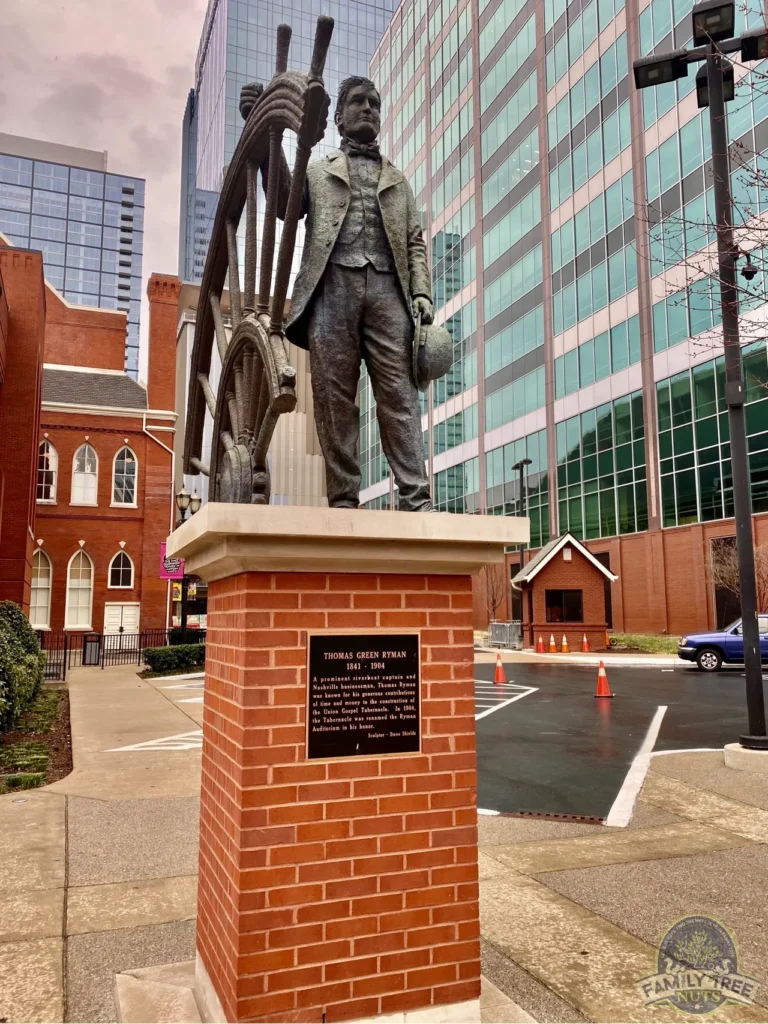
Later Ryman went to see the good Reverend Sam Jones, and there he pledged never to ship another drop of whiskey on the Cumberland River. He also pledged to build a church, or gospel tabernacle, for Reverend Sam Jones to preach. Soon construction began on the project which cost around $100,000, a great deal of money in those days. A few years later, in 1892, the Union Gospel Tabernacle opened and the good Reverend Sam Jones never had to preach in a tent again when he came to Nashville.
On December 23, 1904, Captain Tom Ryman passed away, and historians say around 5,000 people crowded into the tabernacle to attend his funeral. In light of the fact that he had done so much for the advancement of the gospel in Nashville, it was decided to rename the tabernacle, “Ryman Auditorium” after him. It wasn’t long before the pulpit was replaced with the stage, and the facility began to host a lot of different types of events, such as the Chicago, and New York Philharmonic Orchestras. The facility was able to seat up to 6,000 people, and they began to use it for many different types of events.
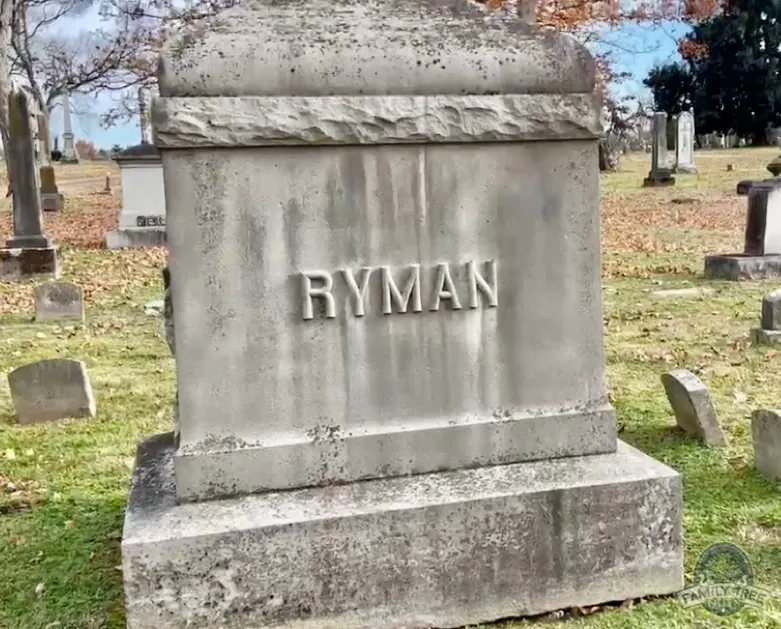
Moving forward 21 years, a new radio station started up across town, called WSM. It was given a clear channel, which means no other radio station could be on the dial at the same spot, and what that meant was, people could hear the WSM signal, in 30 states across the nation. The huge transmitter, and tower were built south of town, and is still there today. At the time, it was the largest transmitter tower in the nation, and it was actually used to send signals to the United State Submarine Fleet in World War II. The channel had a nighttime, “old timey” music show that was so popular that it was picked up by the NBC Radio Network, and broadcast all over the nation. The first local musician to appear on the show was Uncle Jimmy Thompson. The weekly show became so popular, people were coming from all over the nation just to sit in the room, and watch the radio show.
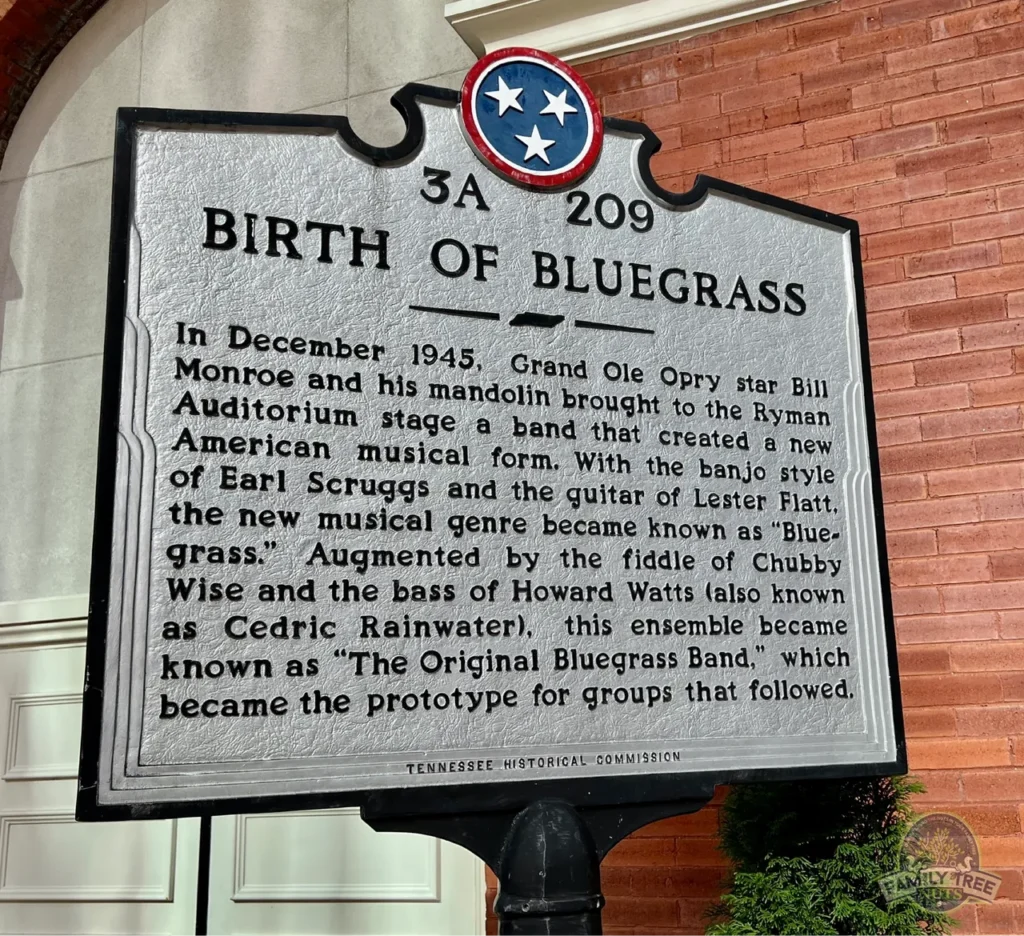
They named the show, The Grand Ole Opry, which is still broadcast today, and is the longest continuously running radio show in the nation. People were listening from all over America, and they were coming to Nashville to watch the show. They had to find a bigger space to accommodate all the fans, which led them to the Ryman Auditorium. As most folks know, this place was soon known as, the “Mother Church of Country Music”, and the rest is history.
Ryman Auditorium became the original home of the Grand Ole Opry, and who would have ever thought that it all started at a tent revival, clear back in 1885. A night out on the town led to one man’s redemption and a change of heart forever, and then to the one of the most iconic music venues in the nation. Today, Captain Tom Ryman is remembered at the Ryman Auditorium, and his statue stands on the plaza, facing east towards the Cumberland River. Be sure to see the video below made on site of Ryman Auditorium, the original home of the iconic, Grand Ole Opry. Be sure to see the video from there at the li
– Scott Denney, Historian, Family Tree Nuts
